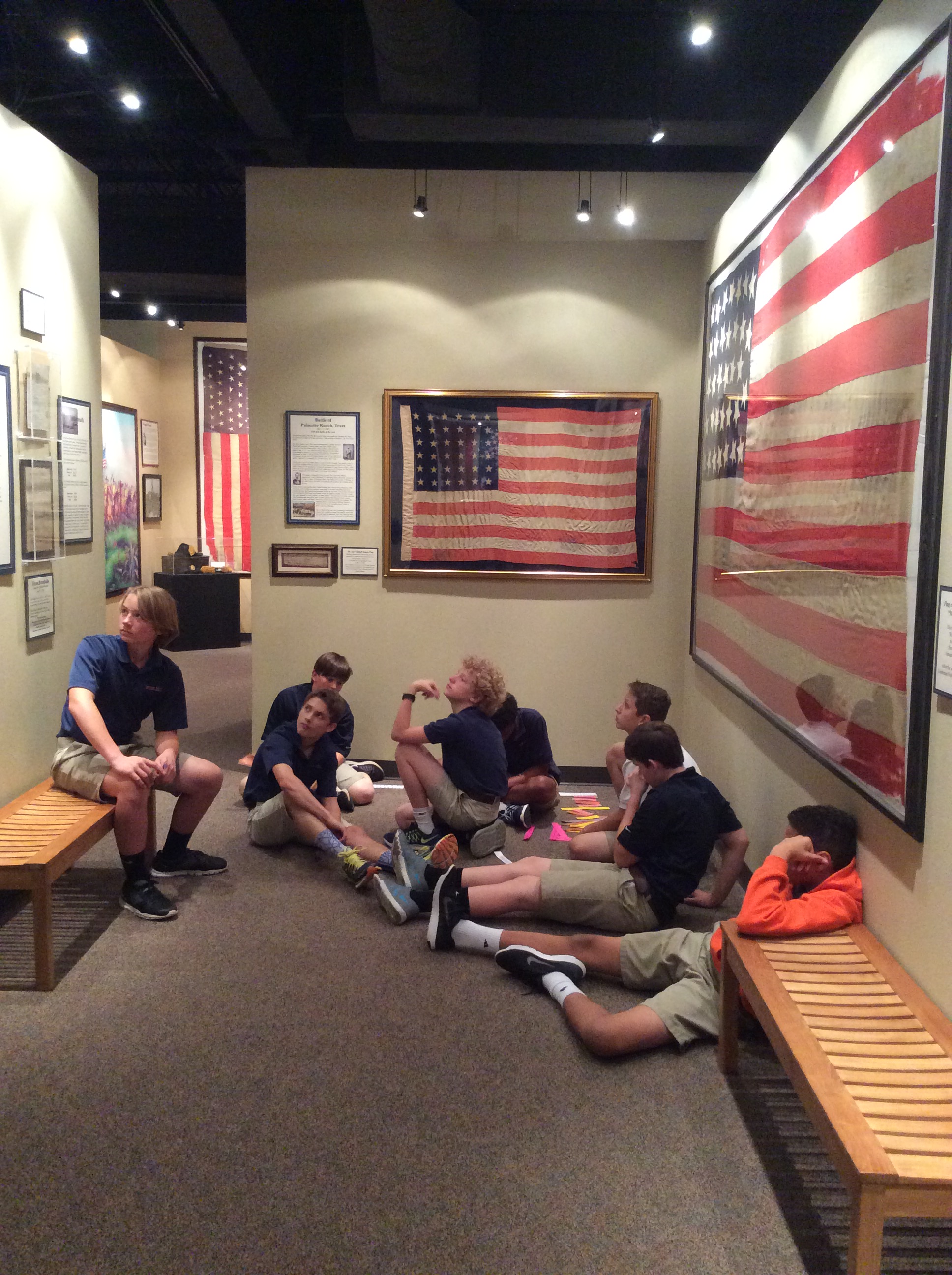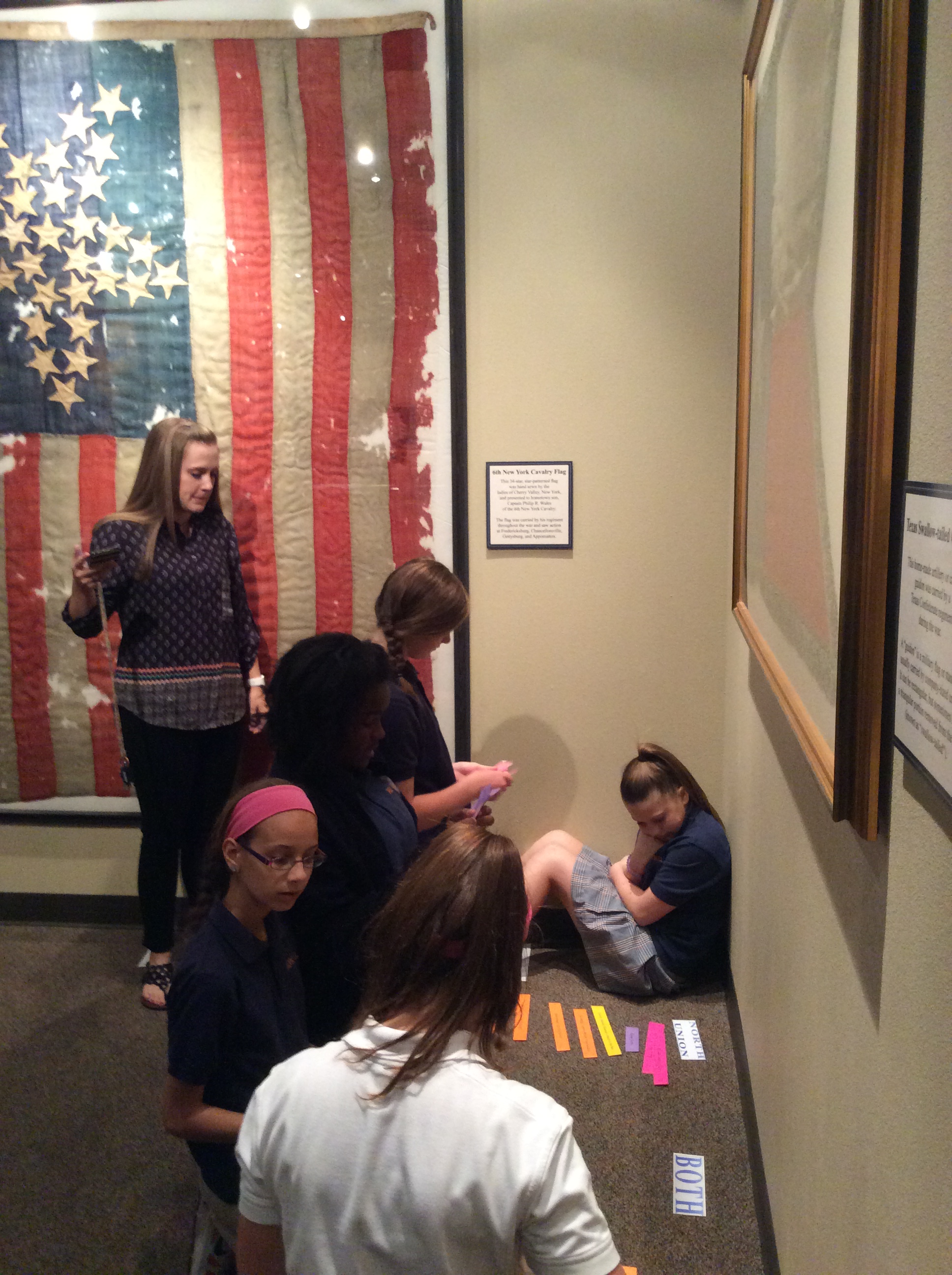Museum In A Minute: North vs. South
From the desk of Jan Hommel, American Freedom Museum Director
Mrs. Mattay and Mrs. McHugh’s 7th grade Humanities classes visited the American Freedom Museum this week to wrap up their study on Texas and the War Between the States. After reviewing facts on the leaders, causes, advantages, victories, spies and battle cries of the war, students were challenged with an activity of sorting those facts into the categories of North, South, or those that applied to both sides. They also focused on Smith County’s contributions during the War Between the States.
“The beginning of the Civil War found Smith County, Texas in a period of expansion, with high hopes for prosperity and continued growth in the 1860’s Instead, the first half of the decade brought war, with its chances for glory and freedom, and the equal chances for poverty and death. Approximately 1,500 Smith County men out of a total free population of 8,408 marched off to what they viewed as certain Confederate victory, leaving family and friends behind, but it was at home, as much as at the front, that the outcome of the war was decided. Although the county was one hundred miles from the nearest battle, the impact of the war was felt through several Confederate installations and by the drain on the population, the economy, and the morale. When the defeated heroes came home, it would be to a different county than the one they had left.” (Vicki Betts – Smith County, Texas in the Civil War)
Some of the key Confederate installations in Smith County:
- Camp Ford: located four miles northeast of Tyler, Camp Ford first began as a military training camp as early as 1861. In 1863, it was converted to a prison camp. About 5,300 Union soldiers were incarcerated at Camp Ford. Compared with other prison camps, conditions at Camp Ford were relatively good, largely due to a running stream through the camp that provided fresh water. The death rate was a low 5%.
- Confederate States Ordinance Works (formally, Short, Biscoe & Company): This operation produced a variety of military goods in two locations. One location, in downtown Tyler on the north side of the square made up to 15,000 cartridges per week. A harness shop made cartridge belts, straps, saddles, stirrups, harnesses bridles, and cap boxes. A carpenter shop mad ammunition boxes, chests, coffins, tables, etc. and a tin shop manufactured belt hooks, magazines, canteens, and tin cups. A blacksmith shop made gunlocks, screws and nails. Another location one mile south of downtown, on Augusta St., made and repaired guns. There were 2,223 rifles manufactured and over 4,400 repaired.
- Pharmaceutical Laboratory at Headache Springs: Here, Surgeon, W.R. Johnston manufactured a variety of medicines and liniments from native plants such as mints, berries, grapes, sweet gum, sassafras, and slippery elm. He also operated a large distillery whose product was necessary to preserve the medicines and to treat various medical conditions. It was located three miles east of Tyler.
- Commissary and Quartermaster Departments: These government departments were responsible for obtaining provisions for the army. Shoes and hats were manufactured.
- Transportation Depot: Made wagons, harnesses, caissons and saddles
- Salt Works: Two saline or salt flats were located in the county. Neches Saline was located in the extreme southwestern part of the county and included 12 furnaces which evaporated salt from brine drawn from shallow wells. This operation employed 310 people and could produce 20,000 pounds of salt per day. The other, Steen’s Saline, located 14 miles north of Tyler, had 20 furnaces and could produce 200,000 pounds per day. Salt was the South’s scarcest commodity.
- Army Hospital: A military hospital occupied the Planters Hotel in downtown Tyler throughout the war.
- Private Enterprises: Various private enterprises also contributed to the war effort on government contracts. These operations included the manufacture of hats, tanneries, sawmills, wool carding mills, and a spinning wheel factory making wheels, looms and shuttles.



